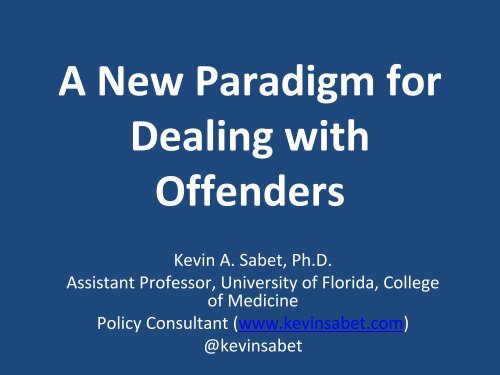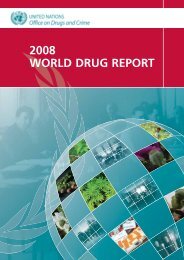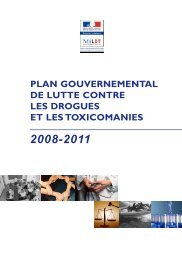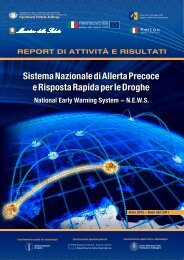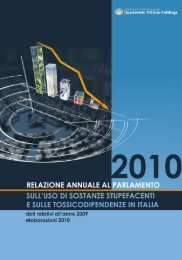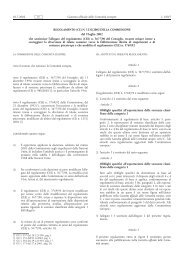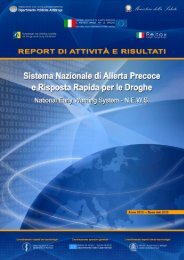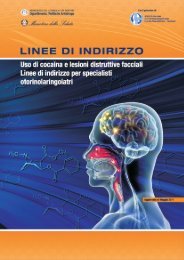A New Paradigm for Dealing with Offenders
A New Paradigm for Dealing with Offenders
A New Paradigm for Dealing with Offenders
- No tags were found...
Create successful ePaper yourself
Turn your PDF publications into a flip-book with our unique Google optimized e-Paper software.
A <strong>New</strong> <strong>Paradigm</strong> <strong>for</strong><strong>Dealing</strong> <strong>with</strong><strong>Offenders</strong>Kevin A. Sabet, Ph.D.Assistant Professor, University of Florida, Collegeof MedicinePolicy Consultant (www.kevinsabet.com)@kevinsabet
Criminal Justice in the United States• Approximately 2.3 million adults (1% of thepopulation) are in prison• Over five million adults are under communitysupervision• 33% of probationers are serving sentences <strong>for</strong>drug crimes• These populations are growing
Standard Community CorrectionsPrograms• Probationers must comply <strong>with</strong> certainconditions• Due to heavy caseloads, probationers are notmonitored strictly• Drug testing is infrequent• It is difficult and time‐consuming to en<strong>for</strong>cesanctions or revoke probation or parole• Sanction rates are low and sporadic
Problems <strong>with</strong> the Current System• Criminals are often impulsive and do notconsider long‐term consequences• By rarely en<strong>for</strong>cing sanctions, probationerslearn they can violate terms, often <strong>with</strong>outconsequence• Drug treatment program completion rates arelow• Many probationers need housing, job training,and healthcare
Emerging Community CorrectionsPrograms• <strong>New</strong> community corrections programs showmore promise than the typical model• These programs help break the arrest,incarceration, release, and re‐arrest cycle• The strategies use swift and certain – butmodest – sanctions <strong>for</strong> drug use or reoffending• Evidence to‐date has been positive
Drug Courts• Started in Miami in 1989, there are now over1,600 throughout the United States• Non‐violent offenders charged <strong>with</strong> drugcrimes are eligible• Programs differ among jurisdictions, <strong>with</strong>some similarities:– Duration is approximately one year– Drug tests and outpatient treatment are required– Weekly court meetings– Defendants must obtain a GED and employment• Separate drug courts exist <strong>for</strong> juveniles
Drug Courts• Drug courts have been successful in reducingdrug use and recidivism, particularly <strong>for</strong>graduates• Jail space is saved• They are cost effective due to:– Reduced recidivism– Reduced costs related to victimization– Healthcare costs
Hawaii HOPE• Began in 2004 on Oahu• Probationers are subject to frequent, randomdrug testing• Every positive drug test leads to animmediate, short‐term jail stay• Drug treatment may be requested at anytime, but is required <strong>for</strong> repeated failures –aprocess known as “behavioral triage”
Hawaii HOPE• HOPE probationers have significantly reducedrates of drug use• Participants speak highly of the program andappreciate its consistency• Judges and probation officers are verysatisfied <strong>with</strong> the program• It is cost‐effective, <strong>with</strong> the majority of thecost going toward treatment <strong>for</strong> intensivedrug users
South Dakota 24/7 Sobriety• Operates across the state• DUI offenders must undergo twice‐dailyalcohol breath testing and random drugtesting• Some offenders wear an alcohol‐monitoringankle bracelet or drug‐testing patch• Participants who fail a breathalyzer or drugtest are immediately sent to jail <strong>for</strong> a shortperiod
South Dakota 24/7 Sobriety• 24/7 has significantly reduced the number ofDUIs• Rates of offenses <strong>for</strong> program participantswere significantly lower during the first 30days of the program, and even lower after 90days
Challenges• All three programs require coordination ofmultiple public agencies• Programs must start slowly• Inconsistency may lower effectiveness• The programs reach a small percentage of theoverall criminal caseload• Treatment must be available if needed orrequested
Implications <strong>for</strong> Policy• Increased scope of program participants• Pre‐trial release and drug and alcoholevaluation• Focus on rehabilitation and public safety• HOPE and 24/7‐style monitoring <strong>for</strong> DWI ordrug courts• Treatment and behavioral triage• Swift, certain, and proportionate sanctions <strong>for</strong>violations• Adaptive programming


